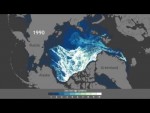
Climate change is one of today's most hotly debated topics, not only in America but around the world. This series features firsthand accounts from people who have been affected by the occurrence, with a team of correspondents from the entertainment and news industries traveling around the world to report on effects of global warming and what people are doing to find solutions for it. Among the stories told are Oscar-winner Matt Damon's reporting on the health impact of heat waves around the globe, Golden Globe-winner Michael C.










